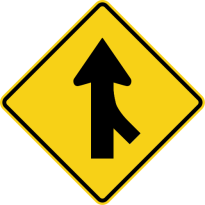 In an editorial just published in JAMA, Drs. Eric Topol (director of the Scripps Translational Science Institute) and Saurabh Jha (a radiologist at University of Pennsylvania) propose the merging of pathology and radiology into a single “information specialist” discipline. They argue that since computers will be able to perform the manual aspects of image interpretation, humans can focus on higher tasks without the need for training in these nuances.
In an editorial just published in JAMA, Drs. Eric Topol (director of the Scripps Translational Science Institute) and Saurabh Jha (a radiologist at University of Pennsylvania) propose the merging of pathology and radiology into a single “information specialist” discipline. They argue that since computers will be able to perform the manual aspects of image interpretation, humans can focus on higher tasks without the need for training in these nuances.
The details of their proposed merger are not fleshed out fully but the general concept is that these information specialists would:
interpret the important data, advise on the added value of another diagnostic test, such as the need for additional imaging, anatomical pathology, or a laboratory test, and integrate information to guide clinicians.
Their proposal is non-specific enough that it is difficult to critically assess. Notice how blithely they propose that these information specialists will “interpret the important data” without further elaboration. What constitutes “important”? New diagnoses of malignancy? Identification of infectious organisms? Positive margins?
A problem with this suggestion, however non-specific, is that one wonders how these specialists will be able to “interpret the important data,” whatever it is exactly, when their training in morphologic interpretation is so diluted:
Information specialists should train in the traditional sciences of pathology and radiology. The training should take no longer than it presently takes because the trainee will not spend time mastering the pattern recognition required to become a competent radiologist or pathologist. Visual interpretation will be restricted to perceptual tasks that artificial intelligence cannot perform as well as humans. The trainee need only master enough medical physics to improve suboptimal quality of medical images. Information specialists should be taught Bayesian logic, statistics, and data science and be aware of other sources of information such as genomics and biometrics, insofar as they can integrate data from disparate sources with a patient’s clinical condition.
Thus, within the same length of time as it currently takes to become adept in either pathology or radiology, these new specialists will train in both fields and also become adept in Bayesian logic, statistics, and data science. Without being well-versed in the minutiae of image interpretation, will these future specialists be able to perform higher level perceptual tasks that AI cannot perform as well? I’m not sure I would trust them.
However, there is merit to some of their argument. Machine learning can in some instances predict patients’ prognoses better than pathologists can. As shown in a recent study they cite, machine learning can predict prognosis of non-small cell lung carcinoma patients more accurately than our current grading and staging criteria, using image analysis parameters that can only be discovered and quantified by software. Thus in the future we may scrap our current grading and staging schemes as machine learning combined with molecular testing better predicts patient prognoses and responses to therapy.
At some point in the future, AI will no doubt displace the skills of the pathologist, but by then it will be supplanting many other medical specialties which similarly will be more competently performed by AI. In the near term, though, replacing specialized training in pathology and radiology would leave no one – neither humans nor computers – who is competent to interpret the important data.
Finally, aside from the text of this piece, what is perhaps even more illuminating is that the authors of a proposal in a leading medical journal to completely revamp the practice of pathology and merge it with another did not even include a pathologist. We as a specialty are doing something wrong if this conversation is taking place without us.
This is a very interesting merger. I think there will be an enormous amount of resistance. Even though radiologists should realize if they don’t change they die. Many ideas like this will try to move into a space where technology is moving quickly. IBM Watson will offer any doctor to analyze images better than they do. That is not today but soon. The 5th Industrial Revolution is moving quickly and the radiologists have to decide what direction they want to take.
Just my opinion.
LikeLiked by 1 person
I agree that such a merger would encounter tremendous resistance; it probably will happen at some point but the incentives need to be much stronger than they are now.
LikeLike